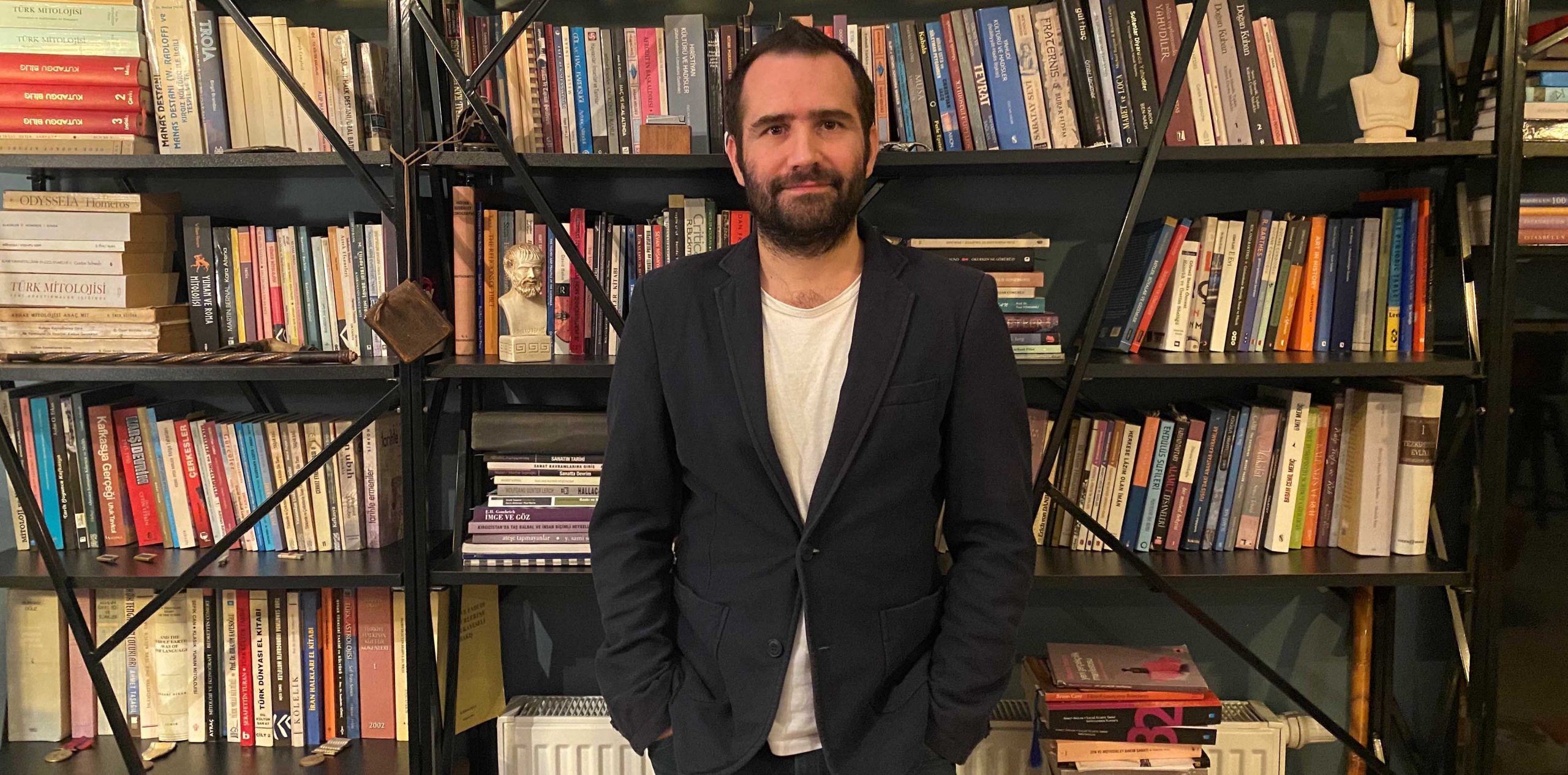Cem Onat aims to achieve the unity of existence throughout his paintings by adopting the style of action painting. His canvases, bearing the traces of body movements, promise an aesthetic pleasure to the audience. We had a short conversation with the artist on his journey towards painting and his artistic approach.
Cem Onat completed his undergraduate degree at Başkent University at the Department of Graphic Design and took his master’s degree from Yeditepe University Institute of Social Sciences, at the Department of Plastic Arts. In addition to his artistic production, he works as a Faculty Member and Deputy Head of the Department of Art and Cultural Management at Yeditepe University.
Can you briefly explain your relationship with painting? How did it develop?
My relationship with painting has always been quite intense. During my childhood in Ankara, I was spending every weekend at the art galleries of my parents’ friends. And during my youth, I spent a lot of time in my very close friend’s family gallery. Later, perhaps because it was very popular, and maybe with the influence of Prof. Filiz Yenişehirlioğlu, I started my undergraduate education in which art and philosophy were taught. Finally, I realized that I needed to work more on color and paved myself through the field of painting.
During your MA degree, you studied Japanese Buddhism and Japanese Mandalas at Temple University. What would you say about this experience? Do we see the traces of this experience on your approach to art?
Prof. Dr. Shigenori Nagatomo made a valuable contribution to my understanding of art and my worldview. It would be better to take this issue in terms of Shigenori Nagatomo rather than Temple University. From my point of view, considering the master-apprentice relationship with Nagatomo, we observed our creativity as the one and one together. This integrity has shaped all the practices of my paintings and my understanding of art.

You mention ‘to become one with painting’… Can you explain this statement?
This is called a ‘unity of existence’ approach. Unity of existence originates in Tantric Buddhism, Taoism, Sufism, and Kabbalah. We can give an example of the Yin and Yang diagram through Taoism. Yin or Yang become, one when alone, two when together, and three when they find harmony. Therefore, they constitute the last stage of existence. While Yin and Yang represent various symbols, I aim to become one with my paintings in an action painting technique without using any symbols.
Can you also explain the process of naming your paintings?
The reason I name my paintings is that I do prefer to stay in the context of subject. I believe it is not possible to interact without forming an idea in the mind of the audience. I think that aesthetic pleasure can emerge through the audience during this interaction.
What would be the resources you would recommend to newly graduated artists or the audience? Can you explain through your own experience?
Besides classical philosophy, I can cite a few examples from contemporary literature. For example, the necessity of reading Ibn-i Arabi’s Fusûs’l Hikem. I find it useful to read Sufism and Taoism: A Comparative Study of Key Philosophical Concepts of Ibn ‘Arabi and Lao-tzu and Chuang-tzu by Toshihiko Izutsu. I think it will be useful to go through art on a subject that varies according to the field of interest. For this reason, I would like to recommend Ioanna Kuçuradi’s book To Look at Art with Philosophy, goes beyond the plastic arts. Mircea Eliade’s book Images and Symbols is also a good resource in which artists can improve their knowledge of symbolism. I am aware that I do not touch on my own experiences much, but as I mentioned before, I tried to make accessible suggestions within the framework of my interests, as it will vary according to the person.
How did you get acquainted with art50.net? What are your expectations?
I met art50.net thanks to my wife. I think that I can work with art50.net for many years. I believe the working principles of art50.net, their perspective on art and their dialogue with the artist are unlike any institution I have worked with before.

If you were given a huge budget and you could only buy one work of art with that budget, whose artwork would you buy? And why?
I would like to buy Les Capétiens Partout by Georges Mathieu. In addition to being an artist who reflects the harmony of music-painting in the best way, in my opinion, his works with mystical characteristics represent the highest forms of beauty.
We are spending most of our time at homes during the Covid19, and some restrictions continue. How did this situation affect you? Is it reflected in your artistic production?
During this period, interaction with my students does continue online. And my artistic progress moves on with other academic studies as before. In this process, I have concluded that online activities cannot prevent face-to-face relationships both in professional and artistic contexts. Unlike the majority, I think the future will not be dominated by only online, but rather, the value of face-to-face environments will be reconsidered and will increase. In this sense, if the pandemic process would create any change, this would initiate from the reactions of humanity. When people would extend their dialogues and behaviors among themselves, the ethical values will become more significant. In other words, when the virus gets tackled, people who have diverged from each other during the pandemic process would hopefully advance their relationships.
Interview: Sena Arcak Bağcılar
You can view Cem Onat’s recent works at the exhibition Rhythmic Transitions at Swissôtel The Bosphorus, Istanbul, 7 days a week until January 31, 2024.
Click for the exhibition catalog and prices.

